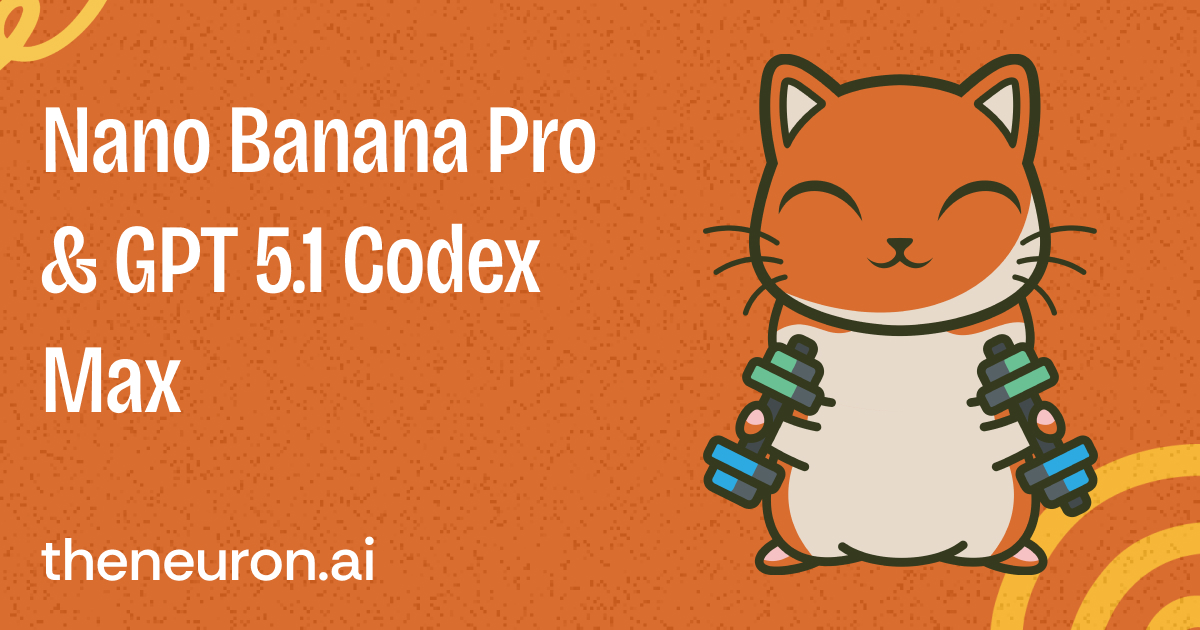Welcome, humans.
A tiny startup just dropped something that sounds impossible: fully playable AI-generated video game worlds that run in real-time, in your browser.
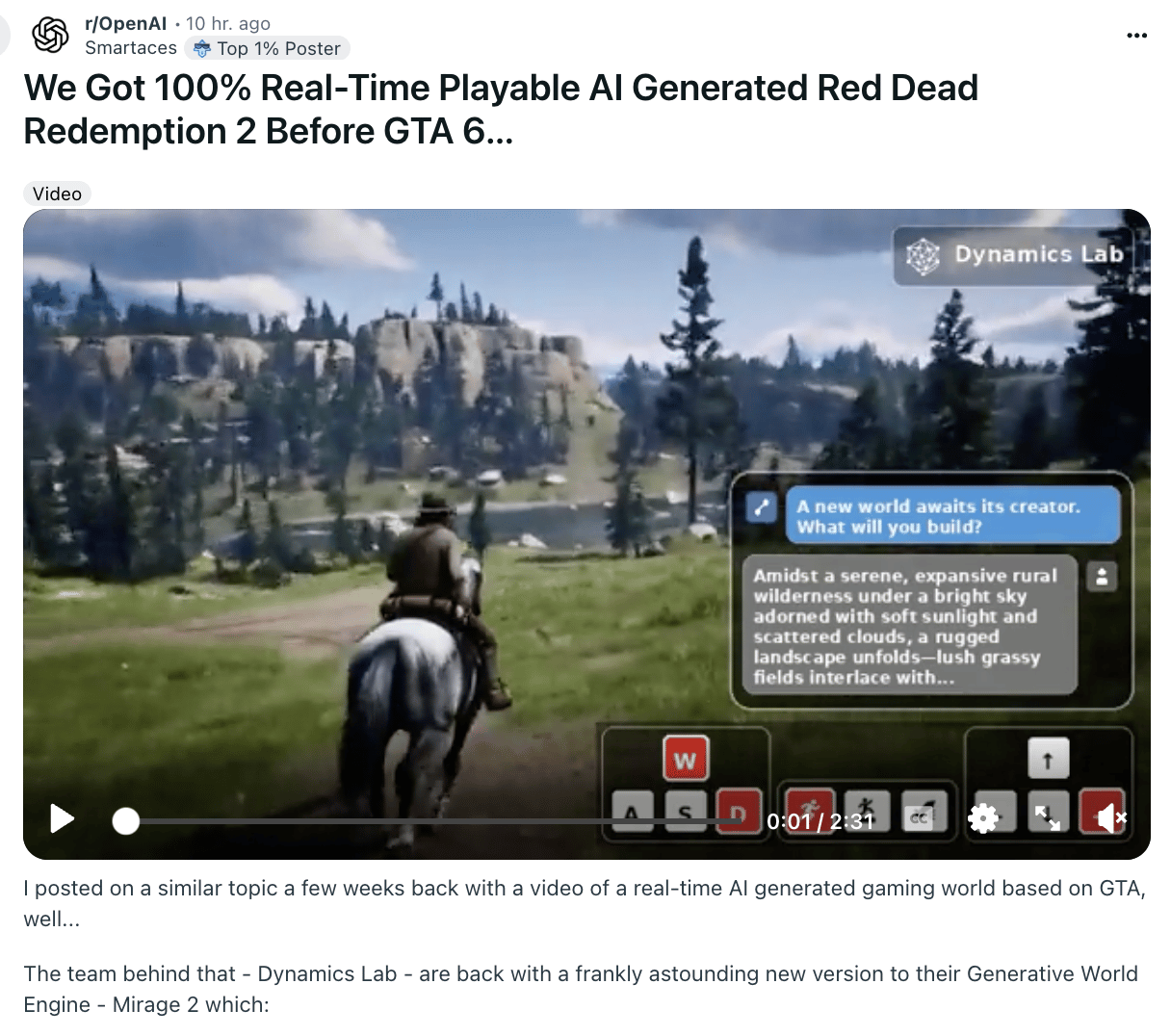
Dynamics Lab's “Mirage 2” lets you gallop through a Red Dead Redemption-style Wild West, then mid-ride, type "change to city environment" and watch your adventure morph into an urban landscape. Six worlds are included, as well as walking inside Van Gogh's Starry Night.
What’s really amazing? This type of video can sustain 10+ minutes with sub-10 team members. Meanwhile, major studios spend years and hundreds millions… But then again, AAA games are 50+ hours, so Mirage 2 needs 300x scaling to match.
Does all this remind you of anything? Like, IDK, say Google's Genie 3? Dr. Hannah Fry just interviewed the creators, explaining “autoregressive prediction” (language AI for visual frames) and generating interactive worlds from text prompts, plus a demo Neuron fans will love…
Now, you can't play Genie 3 (yet), but CAN play Mirage 2 right now (expect servers = slammed). Warning: users compare these games to a “shrooms trip” where everything flows but nothing makes sense. Your horse changes colors, scenery changes when turning. You're basically playing robot's fever dream!
Here’s what happened in AI today:
- Google published a study showing AI energy use is much lower than estimated.
- Anthropic could raise $10B at $170B valuation.
- Google and Anthropic offered discounted AI services to US government.
- DeepSeek released a usable v3.1 and Z.AI launched a smartphone AI agent.

Google Just Revealed How Much Energy AI Really Uses (Spoiler: Way Less Than You Think)
Calculating our AI energy consumption
Google just released the most comprehensive study ever on AI's environmental footprint, and the numbers might surprise you. Turns out, that Gemini prompt you just typed? It’s like watching TV for less than nine seconds.
Here's the deal: The median Gemini text prompt consumes just 0.24 watt-hours of energy, generates 0.03 grams of CO2, and uses 0.26 milliliters of water (that's literally five drops). These numbers are substantially lower than many public estimates floating around.
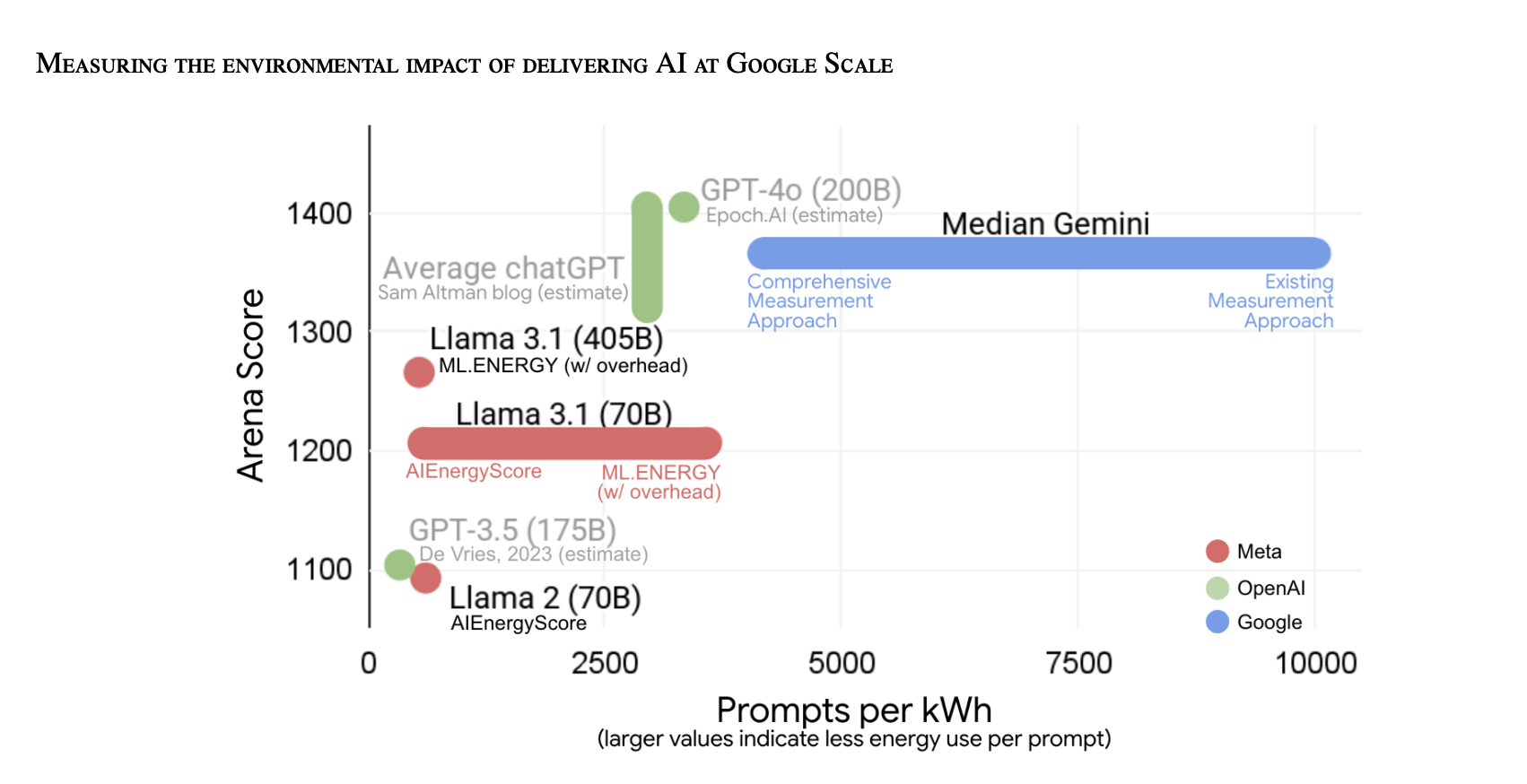
But here's where it gets interesting—Google didn't just measure the obvious stuff. Most studies only look at the GPUs doing the actual AI thinking. Google's comprehensive methodology includes everything: the idle machines waiting to handle traffic spikes, the CPUs managing everything, even the cooling systems keeping it all from melting.
Why does this matter? Because incomplete measurements have been wildly overestimating AI's environmental impact:
- Previous estimates: A ChatGPT prompt uses 3-7 Wh of energy.
- Narrower measurements: Only counting active GPU usage shows 0.10 Wh.
- Google's full-stack approach: Including all infrastructure reveals 0.24 Wh total.
- Plus, actual water consumption: 0.26 mL vs. previous estimates of 45-50 mL per prompt.
Google's been quietly crushing it on efficiency, too. Over the past year, they've reduced Gemini's energy consumption by 33x and carbon footprint by 44x per prompt—all while making responses better. That's like getting a Ferrari that suddenly gets Prius-level gas mileage. Which btw, is not unlike today’s actual F1 engines!
Their secret sauce includes custom TPUs (Google’s in-house AI chips, which are 30x more efficient than their first generation), smarter model architectures like Mixture-of-Experts that only activate the brain cells needed for each specific question, and ultra-efficient data centers running at 1.09 PUE (translation: only 9% energy overhead for cooling and infrastructure).
The full technical paper argues we need industry-wide standards for measuring AI's footprint. Without consistent measurement, reported figures vary by orders of magnitude for similar tasks—making it impossible to compare models or track real progress.
Bottom line: AI's environmental impact is real, but it's been massively overblown by incomplete data. This report aims to complete said data. Cause Google measured EVERYTHING… even the kitchen sink's contribution to cooling!

FROM OUR PARTNERS
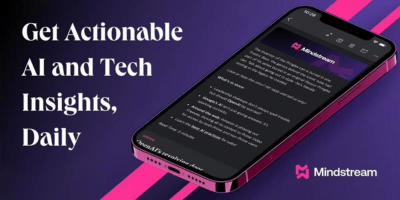
200K+ execs, founders, and innovators rely on Mindstream to cut through the AI noise. They deliver powerful insights, real-world applications, and breakthrough updates—all in a quick, daily read. No fluff. No cost. Just your unfair advantage in the AI era.
Don’t fall behind— read Mindstream.

Prompt Tip of the Day.
The thing is, GPT-5 doesn't actually need to know that many things; it just knows how to find them. SEO expert Dan Petrovic recently argued that OpenAI's latest model is “virtually useless” without web search, which completely changes how we need to think about getting AI to cite our content. This graphic (shared by our resident SEO expert Callen Waldie) shows the new workflow:
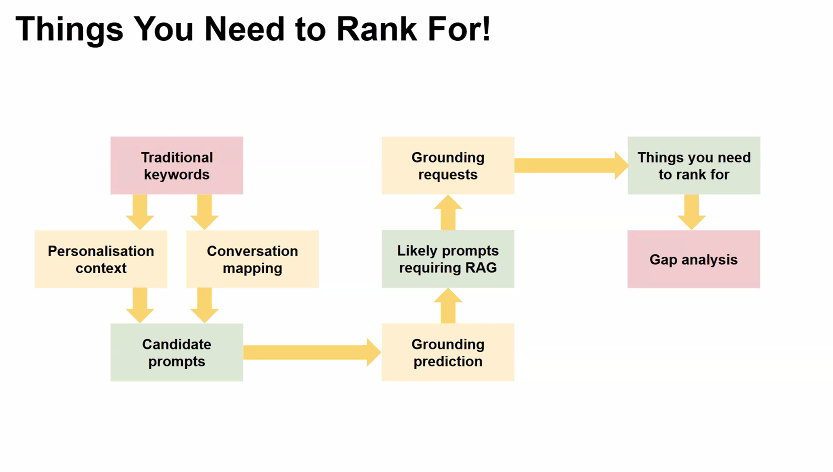
Instead of optimizing for keywords like “project management software,” you need to target the actual prompts people use with AI like “Help me choose between Asana and Monday for a remote team.” The key is predicting when AI will need to search (what he calls “grounding”)—which is usually for “real time” data questions like current prices, comparisons, reviews, or implementation details.
Dan’s suggestion to get cited: structure your content for AI consumption: Clear H1 answering the question, 2-3 sentence summary with key facts, detailed breakdowns with bullets, and most current data possible provided with dates prominently displayed.
Check out all of our prompt tips of the day from August here!

Treats to Try.
*Asterisk = from our partners. Advertise in The Neuron here.
- *Guidde converts your screen recordings into professional video tutorials with AI-generated step-by-step narration and voiceover in 100+ languages.
- DeepSeek shipped an upgraded model with hybrid “think / non‑think” modes and 128K context in its new V3.1 release; the model has 671B total parameters (37B active) and an MIT license for self‑hosting.
- Rube lets you control 500+ apps through chat—archive emails, react to Slack messages, or manage any tool by typing commands (kind a like a mega MCP, for those who are familiar).
- Command A Reasoning drafts content, summarizes documents, and analyzes data for you on your own secure servers—it’s a 111B parameter model that runs on just 2 GPUs, supports 23 languages, competes with GPT-4 and Claude, and is open weights for research (commercial use requires a Cohere license).
- Willow Voice lets you dictate emails, Slack messages, and any text across your computer 3x faster than typing, automatically formatting and adapting to your writing style as you speak.
- Continue partnered with Inception Labs to use their ultra-fast Mercury Coder AI model (1000+ tokens/second) to power Next Edit, which watches your coding patterns and predicts your next code changes before you even start typing: you just make an edit, see the suggested changes as diff overlays, then hit Tab to accept or Esc to reject.
- Lumo from Proton breaks down your big projects into smaller tasks, writes code based on your requests, and researches current events while keeping your conversations completely private with zero-access encryption.
- If you want to build AI workflows that actually work, you need to understand evals. Tina Huang has a great summary of it here, but Peter Yang just put together this super simple guide that anyone can follow—check it out!

Around the Horn.
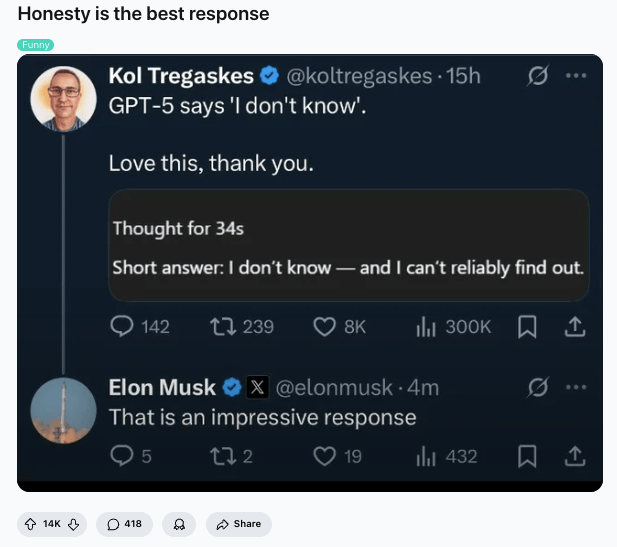
So far, the only thing about GPT-5 to impress Elon was the fact that it’ll straight up tell you if it doesn’t know something (but, uh… whether or not it actually KNOWS it can or can’t know something is another issue…)
- Anthropic could be about to raise a new round of $10B at a valuation of $170B (if not higher); was going to be $5B, but “strong demand” doubled that amount.
- Google and Anthropic both announced heavily discounted AI offerings for U.S. government agencies, with Anthropic first offering Claude services to all government branches for $1, then Google launching “Gemini for Government” at $0.50 per agency per year.
- China’s Z.AI, in partnership with Alibaba Cloud, launched a smartphone AI agent that can book, order, and create on command. “only need to issue instructions,” enabling the app to book hotels and order takeaway; it’s free on Android and iOS and deploys via Alibaba Cloud.
- Meta poached another Apple exec, this time Frank Chu, who led Apple AI teams on cloud infrastructure, model training, and search.
- Google injected AI Mode in Search with “agentic” capabilities that can actually do things for you, like booking dinner reservations and scheduling appointments while expanding to 180+ new countries.
- Google is also rolling out Deep Research capabilities to NotebookLM, allowing users to automatically pull research sources from both the web and Google Drive directly into their notebooks.
- Anthropic expanded their AI Fluency program with three new courses: AI Fluency for Educators, AI Fluency for Students, and Teaching AI Fluency.
- AI bots are swarming online research on sites like Prolific that pay “people” for answering questions… which points to another need for a trustworthy tool or system for proving “humanhood” online.
- It’s not just online research sites…AI crawlers and fetchers from Meta and OpenAI are overwhelming websites with excessive traffic, with one bot generating 39K requests per minute.

FROM OUR PARTNERS
Vellum: Build, test, and ship AI agents 10x faster
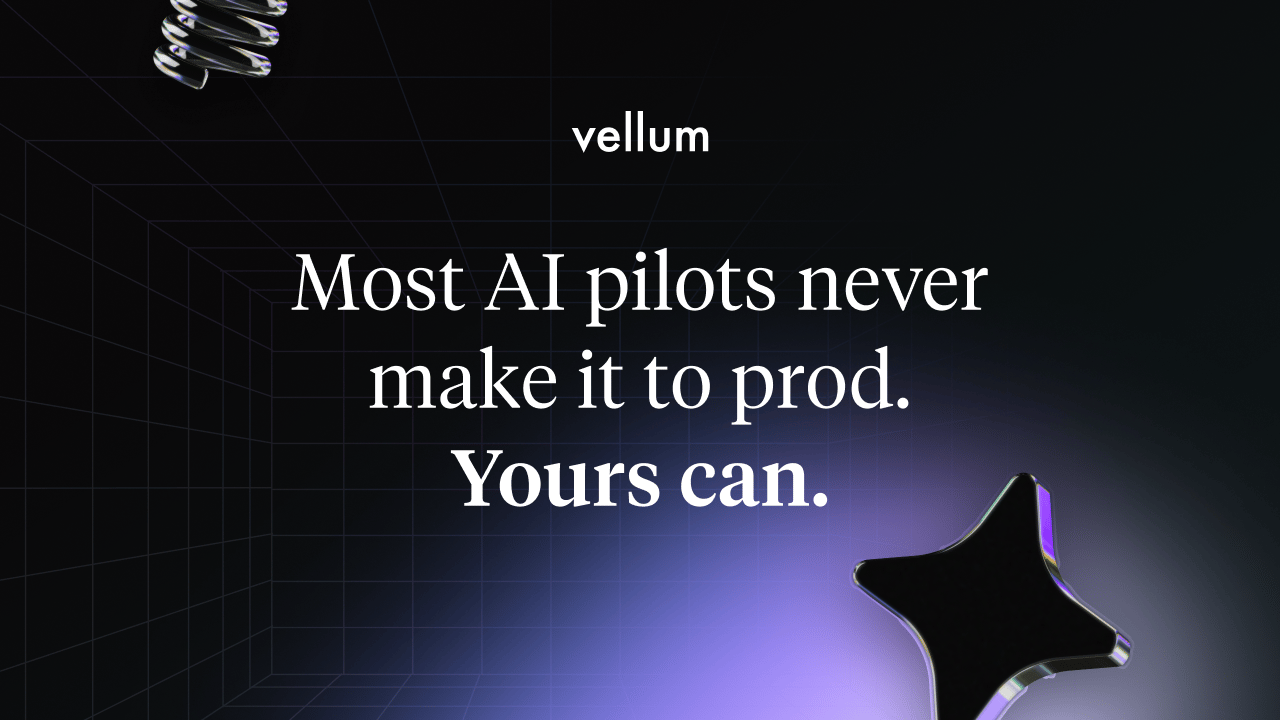
MIT found most AI pilots fail when teams build in-house. With a partner, your odds of success double. Vellum gives you the tools and expertise to ship AI 10x faster. Headspace, Redfin and Drata enabled this for their teams, and now you can too: Get access here.

Intelligent Insights
Lots of great insights and videos from this week on the website today! Check em out!
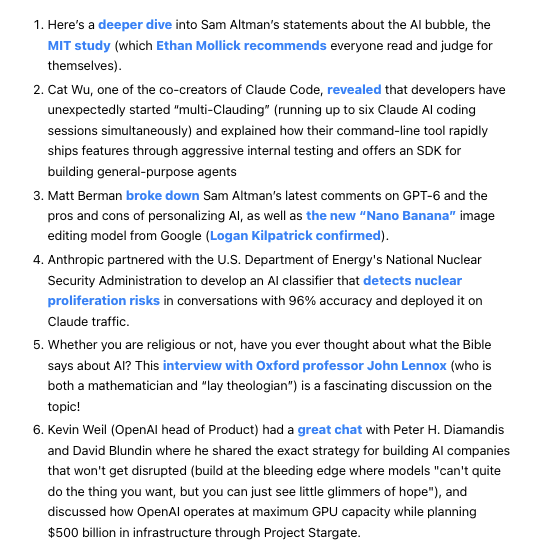
All this and more… click the image to read ‘em!

A Cat’s Commentary.
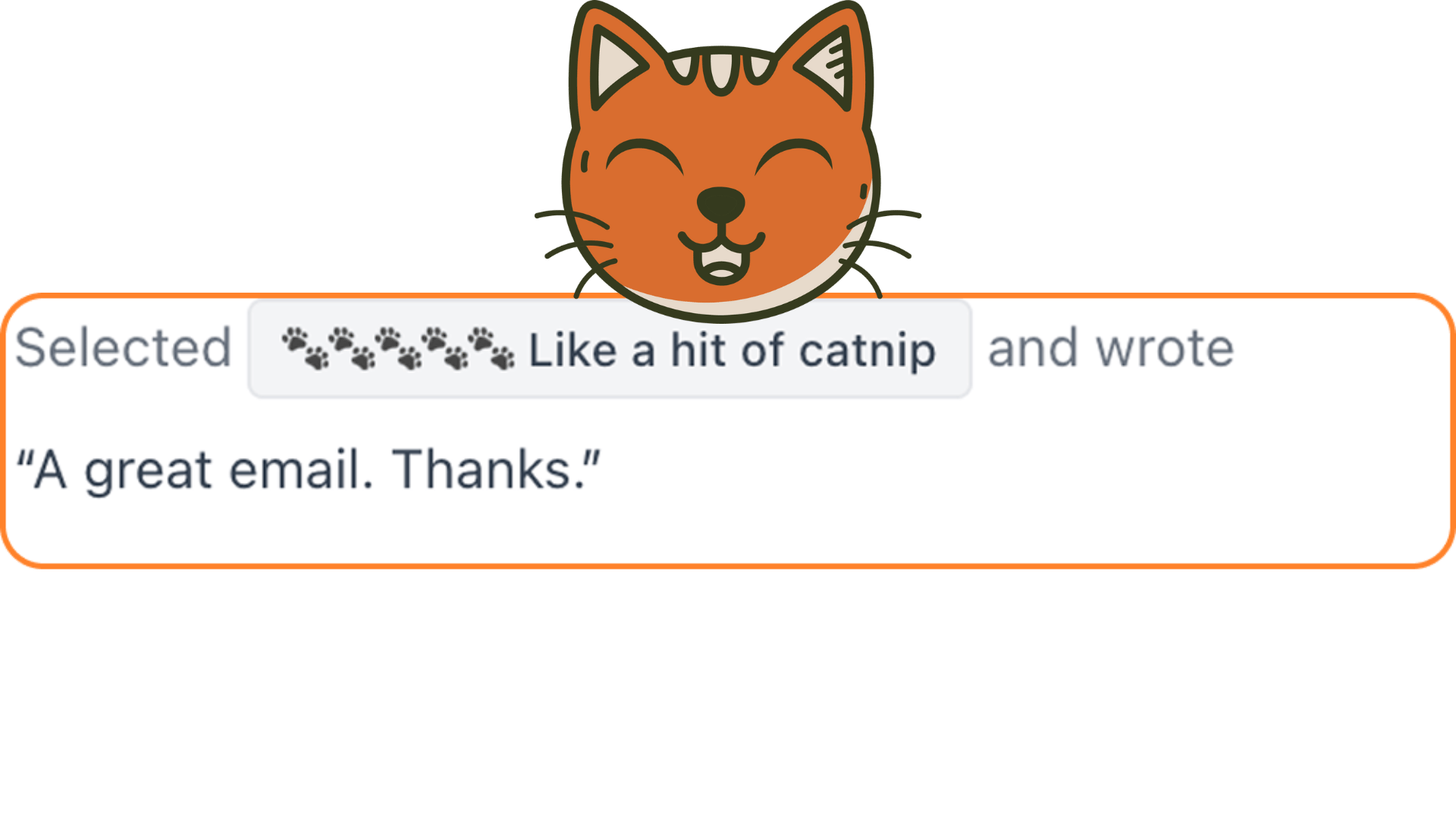


.jpg)

.jpg)


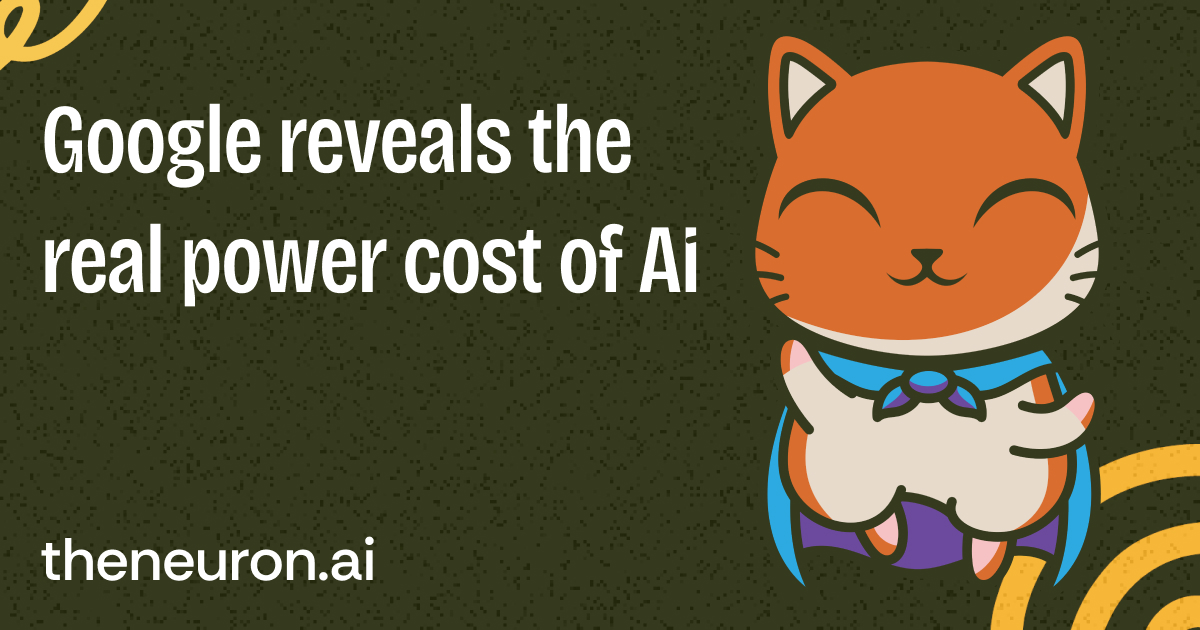



%20AI%20model....png)
